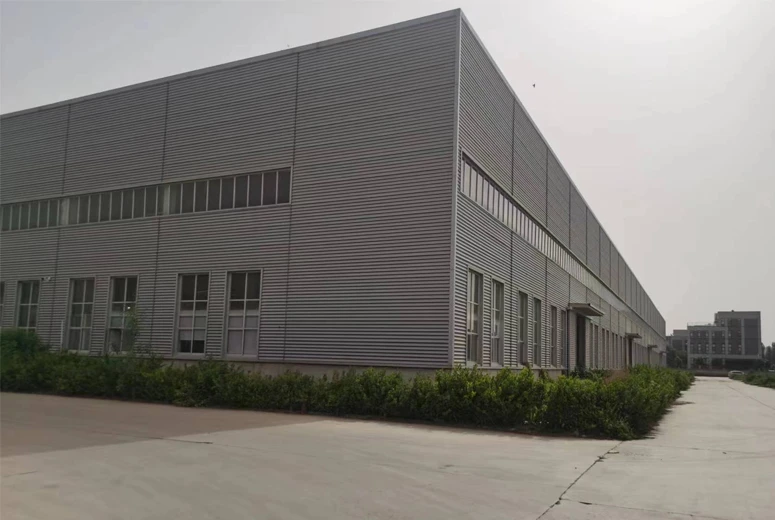Stainless Steel Pipe Production Equipment for Efficient Manufacturing Processes
The Evolution of SS Pipe Manufacturing Machines
In the world of manufacturing, stainless steel (SS) pipes have increasingly become essential components used in various industries, including construction, automotive, and pharmaceuticals. As the demand for high-quality pipes rises, so does the need for advanced manufacturing machines specifically designed to produce stainless steel pipes efficiently and accurately. This article delves into the evolution of SS pipe manufacturing machines, highlighting key technological advancements, operational processes, and their impact on the industry.
Historical Background
The manufacturing of stainless steel pipes dates back to the early 20th century when the unique properties of stainless steel—corrosion resistance, durability, and aesthetic appeal—were first recognized. Initially, the production of SS pipes was a labor-intensive process involving manual labor and rudimentary machinery. However, as industrial demands surged, manufacturers sought innovative solutions to increase production efficiency and product quality.
Technological Advancements
One of the landmark developments in SS pipe manufacturing was the introduction of computerized numerical control (CNC) machines. CNC technology revolutionized the industry by allowing for precise control over the manufacturing process. With CNC machines, manufacturers can automate cutting, bending, and welding processes, ensuring uniformity and reducing human error.
Another significant advancement is the implementation of high-frequency induction welding techniques. This method uses electromagnetic fields to heat the edges of stainless steel sheets, allowing them to be fused together seamlessly. The result is stronger and more reliable welds, integral to the overall integrity of the pipes.
Furthermore, advancements in material science have led to the development of higher-grade stainless steel alloys, which enhance the performance of the pipes. These newer grades are designed to withstand extreme temperatures, pressure, and corrosive environments, expanding the applications for SS pipes in sectors such as oil and gas, food processing, and chemical processing.
Manufacturing Processes
The production of stainless steel pipes generally involves several key processes strip preparation, forming, welding, heat treatment, and finishing.
ss pipe manufacturing machine

1. Strip Preparation Stainless steel strips are sourced and cut to the desired width and length. The quality of the strip significantly influences the final product's strength and appearance.
2. Forming The strip is then formed into a tubular shape using roll-forming machines. The precision of this process is crucial; any deformity can lead to significant weaknesses in the final pipe.
3. Welding Once the strip is formed into a pipe shape, the edges are welded together using techniques like TIG (Tungsten Inert Gas) or MIG (Metal Inert Gas) welding. This step is vital as it determines the pipe's longevity and structural integrity.
4. Heat Treatment After welding, pipes usually undergo heat treatment to relieve stresses induced during the manufacturing process, ensuring they meet stringent quality standards.
5. Finishing Finally, the pipes are subjected to finishing processes, including pickling, passivation, and polishing, which enhance their aesthetic appeal and corrosion resistance.
The Future of SS Pipe Manufacturing
Looking ahead, the future of SS pipe manufacturing machines is poised for further innovations. Automation and robotics are becoming increasingly integrated into the production process, which promises to boost efficiency and reduce costs. Additionally, the use of additive manufacturing, or 3D printing, is being explored for creating bespoke stainless steel components, a trend that could revolutionize custom pipe production.
Moreover, sustainability is becoming a critical consideration in manufacturing practices. The industry is investing in eco-friendly technologies and recycling efforts to minimize the environmental impact of stainless steel production.
In conclusion, SS pipe manufacturing machines have evolved remarkably, driven by technological advancements and increasing market demands. As the industry continues to innovate, it will pave the way for more efficient production methods, enhanced product quality, and greater sustainability in manufacturing practices, ensuring that stainless steel pipes remain integral to countless applications worldwide.
-
High Frequency Straight Seam Welded Pipe Production Line-BzZhou Xinghua Machinery Equipment Manufacturing Co., LTD.|Precision Welding, High EfficiencyNewsJul.30,2025
-
High Frequency Straight Seam Welded Pipe Production Line|BzZhou Xinghua|Precision Welding&EfficiencyNewsJul.30,2025
-
High Frequency Straight Seam Welded Pipe Production Line - BzZhou Xinghua|Precision Engineering&EfficiencyNewsJul.30,2025
-
High-Frequency Straight Seam Welded Pipe Production Line-BzZhou Xinghua Machinery Equipment Manufacturing Co., LTD.NewsJul.30,2025
-
High-Frequency Straight Seam Welded Pipe Production Line-BzZhou Xinghua Machinery Equipment Manufacturing Co., LTD.|Precision Manufacturing, High EfficiencyNewsJul.30,2025
-
High Frequency Straight Seam Welded Pipe Production Line-BzZhou Xinghua Machinery Equipment Manufacturing Co., LTD.|Precision Steel Pipe Manufacturing&Industrial EfficiencyNewsJul.29,2025


